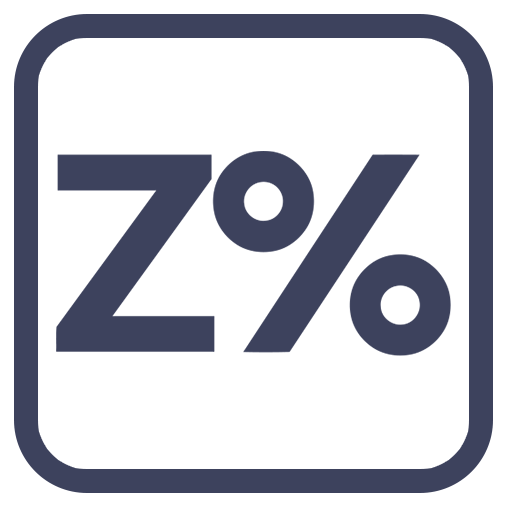-

- Interest Rate2.25
- Inflation Rate MoM1
- Inflation Expectations2.28
- Retail Sales MoM1.9
- GDP Growth Rate0
- GDP m/m
- Manufacturing PMI51.4
- Services PMI 46.9
- Unemployment Rate5.3
-

- 3.75Interest Rate
- 0.3Inflation Rate MoM
- 3.2Inflation Expectations
- 0.2Retail Sales MoM
- 3.8GDP Growth Rate
- GDP m/m
- 52.2Manufacturing PMI
- 54.1Services PMI
- 4.4Unemployment Rate
Day Trading
Short Term/Scalp Opportunity
![]()
Waiting for confirmations
Swing Trading
Long Term Opportunity
Waiting for confirmations
The New Zealand Dollar (NZD), often called the "Kiwi," is the currency of New Zealand. Like the Australian Dollar, the NZD is a commodity currency, with a heavy reliance on exports such as dairy products, meat, and timber. The Reserve Bank of New Zealand (RBNZ) manages the monetary policy of the NZD. Key price drivers include global demand for New Zealand’s agricultural exports, interest rates, inflation data, and risk sentiment. The NZD often correlates with the AUD, as both currencies are affected by similar economic factors, including commodity prices and developments in the Asia-Pacific region. The NZD typically strengthens during periods of global growth and demand for commodities, while it may fall during economic slowdowns or increased risk aversion.
The US Dollar (USD) is the most widely traded currency in the world and the primary reserve currency. It is the official currency of the United States and is often seen as the global standard for trade and investment. The USD’s price is influenced by the monetary policy of the Federal Reserve, inflation levels, and interest rates. Its dominance in global trade makes it highly correlated with other major currencies, especially the Euro and Japanese Yen. Key impact parameters for the USD include US economic growth (GDP), job market conditions, consumer spending, and the Fed’s policy decisions. As a safe-haven currency, the USD often rises during periods of global risk aversion. Its price is also sensitive to geopolitical events, such as US government policy changes and international conflicts.
 NZDUSD Analysis
NZDUSD Analysis
Introduction
The NZD/USD, also a commodity currency pair, is highly sensitive to agricultural export prices (particularly dairy products) and global risk sentiment. The Reserve Bank of New Zealand (RBNZ) has a direct influence on the NZD through interest rate policy. The NZD tends to strengthen when global demand for New Zealand’s commodities rises. Like the AUD/USD, the NZD/USD is closely correlated with China’s economic health.
Fundamentals and Interest Rates
The Reserve Bank of New Zealand policy is Dovish with the (RBNZ) current Interest rate 2.25%. Latest change was Nov 26, 2025 (-25bp)%.
On that side the Federal Reserve policy is Dovish and (FED) has set its interest rate to 3.75% by latest change, Dec 10, 2025 (-25bp).
(FED) Higher interest rates generally lead to higher returns on investments denominated in USD. This tends to attract foreign capital into USD assets.
Based on the economic and macro fundamental data, The Fundamental Bias of NZD is -- Neutral and for the USD is -- Neutral.
Ziwox considering Neutral bias for this asset and we predict side movement in the long-term.
Our Ziwox A, mid-term Fundamental Score for NZD is 5. and Fundamental Score for USD is -11. So, base on the Fundamental Score, we predict mid-term upside price movement.
Market Overview & Performance
In the current trading session, "Sydney & Tokyo", Market risk sentiment is Classic Risk-OFF. The Gold and Switzerland Frank recorded the strongest performance, while the New Zealand Dollar and Australian dollar are weakest so far.
Currencies performance vs US dollar "USD"
Gold "XAU", recorded a 0.27% increase against us dollar.
Euro "EUR", performance has been -0.01% down so far
Pond "GBP", performance has been -0.09% down as of now
Australian dollar "AUD", has dropped by -0.22%
New Zealand dollar "NZD", has dropped by -0.31%
Japanese YEN "JPY", experienced 0.01% rise
Swiss franc "CHF", experienced 0.02% rise so far
Canadian dollar "CAD", has lost -0.04%
Market risk sentiment is OFF, Investors seek safety, favoring safe-haven currencies and assets while selling off riskier investments.Due to the market risk sentiment, NZDUSD price reduction is likely. Becasue investors become risk-averse from NZD, seeking safety amid uncertainty or market turmoil, leading to a sell-off in riskier assets and a flight to safe havens like the USD, JPY, and gold. Currencies tied to riskier economies (e.g., AUD, NZD) tend to weaken.
Market Sentiment and Positioning
NZD COT (Commitments of Traders):
Institutions Net Position on >Newseeland Dollar is -52071 included 23477 long, 75548 short and -2814 position changed from last week.
So they mainly have a bearish view on this asset and sold NZD for lower prices in long-term.
Last week -2814 repositioning Indicates more sell positions and price pressure in short-term.
USD COT (Commitments of Traders):
Institutions Net Position on >U.S. Dollar Index is -16347 included 18448 long, 34795 short and -239 position changed from last week.
So they mainly have a bearish view on this asset and sold USD for lower prices in long-term.
Last week -239 repositioning Indicates more sell positions and price pressure in short-term.
Retail Traders:
Crowd traders or Retail traders are bullish on the NZDUSD with 61% 39% ratio. 0 long pos and 0 short position.
We generally adopt a contrarian approach towards crowd sentiment and we give probability NZDUSD prices may decrease.
Technical Levels and Support/Resistance
The NZDUSD pair is approaching a critical technical support level near 0.57340.
Technical trend is BUY, If the pair continues to weaken, this support could become a good area to enter a long positions.
On the upside, there is key resistance near 0.58391. Technically, A break above this resistance could signal a shift in momentum, but need to get a confirmation in this area due to the reversal or correction potential.
Unlock all Ziwox Terminal features with affordable subscription
Our forecasts, signals, and trade opportunities are provided to help you stay informed, but we do not take responsibility for any potential losses.
Additionally, we do not offer financial or investment advice in this section of the website.
Before engaging in foreign currency trading, its important to carefully consider your own investment goals, experience level, and risk tolerance.
We want to emphasize that we cannot be held liable for any loss or damage, including potential profit loss, that may result from using or relying on this information. Your decisions are ultimately your own, and we encourage you to approach trading with caution and awareness.









